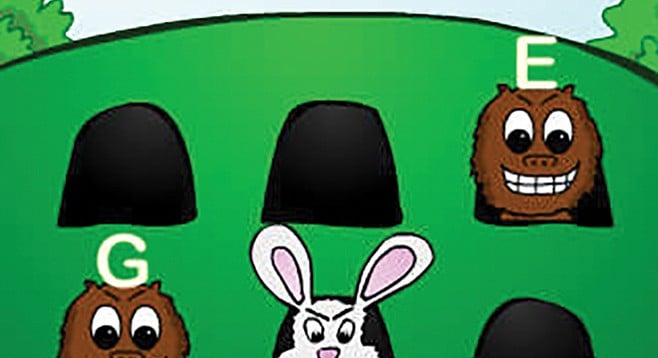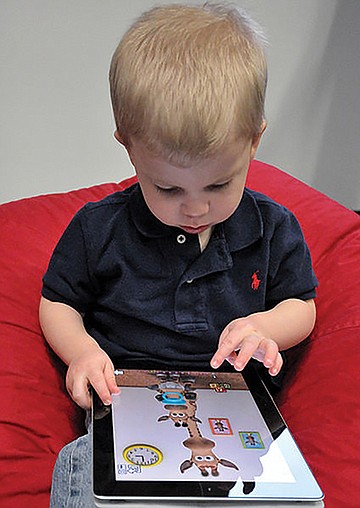 Facebook
Facebook
 X
X
 Instagram
Instagram
 TikTok
TikTok
 Youtube
Youtube

The screen glows for hours some evenings, and I can practically see thin fingers of smoke rising from my child’s ears as the brain cells burn inside her head. She, of course, thinks nothing is wrong and scoffs when I remind her that she used to read books in her free time. My husband feels like a bad dad for buying iPhones and iPads for the family.
I don’t like the arguments about screen time. I don’t like the every-waking-hour electronic connection to the peer group she’s with all day at school. I sometimes wish I were a 19th-century farm wife.
Except, really, I don’t. I like seeing posts and photos from my family spread from Massachusetts to Manila. I like that I can access my kids’ grades through school websites. I like reading online articles with my coffee in the morning. I don’t fancy milking cows.
“I can’t help with your aversion to cows,” my friend Bernice winked, “but as far as screen time goes, I collect my kids’ phones at 9 o’clock each night. And I loaded our iPad with educational apps. If my kids want screen time after 9, they’ll be doing stuff that grows brain cells instead of cooking them.”

But what are the good education apps out there?
“As a developer, the first thing I look for in an educational app is a quality user interface and no bugs,” offered local app developer Bill Wilson. “It should be easy to get around the app and should work. Too often I think developers don’t put the polish into educational apps that they would into commercial apps. Perhaps because the budget is lower? The second thing I look for is fun. If the app doesn’t have some element of fun, I’m not likely to open it very often.
“I think the best app out there is Lumosity. Very clean, easy to use, and beneficial. My 78-year-old mom plays it, as does my 4-year-old.” Lumosity is free and compatible with iPhone, iPad, and iPod Touch.
Lumosity works the attention and memory. Harvard Business Review stated, “Designed by neuroscientists, a brain training approach such as Lumosity builds on breakthrough concepts such as neuroplasticity and fluid intelligence.”
“I also like some of the Math apps,” continued Wilson. “Math Ninja is one of my kids’ favorites, fun story line, some nice game-type stuff, and very easy for kids to use.” Math Ninja is free for iPhone, iPad, and iPod Touch. The tree house needs defending and your math skills are the defense!
Wilson’s own app, Note Squish, works the musical side of the brain with a game for note reading ($.99 in iTunes; compatible with iPhone, iPad, and iPod Touch).
Mariana, a friend from Mexico, uses the Dictionary.com app every day. “I use it any time I want to double check a word’s spelling,” she explained, “or when I don’t know a word’s meaning or when I want to make sure I am using it properly. Plus, it sends you an email every day with the word of the day and it pronounces the word.” The app is free with the option of additionally purchasing slang, idioms/phrases dictionaries, or encyclopedia.
“Stack the States,” suggested Sophie. Map the 50 states, capitals, flags, and nicknames ($1.99 for iPhone, iPad. and iPod Touch).
“Our kids also enjoy DragonBox Algebra 5+,” continued Sophie ($4.99 for iPhone, iPad, and iPod Touch). For ages five and up, it helps kids learn equation-solving with addition, division, and multiplication.
“The Teach Me app, K through third grade, depending on the age,” replied Suzanne ($1.99 for iPad and iPhone). Learning in math and spelling. “Our kids also enjoy Telling Time Free (iPad) and Oregon Trail: American Settler [free for iPhone and iPad].”
Patrick suggested Star Chart (free for iPad, iPhone, and iPod Touch). “Point your device at the sky and it will tell you what you see,” smiled Patrick. “It shows all the constellations, faintly, so it doesn’t overwhelm the chart of the stars. It shows you when satellites are passing overhead, if you buy an add-on for $4.99. It sends notifications about that day in astronomical history — fun space facts. Just the other day I got one saying it was the 44th anniversary of the first manned space flight.”


The screen glows for hours some evenings, and I can practically see thin fingers of smoke rising from my child’s ears as the brain cells burn inside her head. She, of course, thinks nothing is wrong and scoffs when I remind her that she used to read books in her free time. My husband feels like a bad dad for buying iPhones and iPads for the family.
I don’t like the arguments about screen time. I don’t like the every-waking-hour electronic connection to the peer group she’s with all day at school. I sometimes wish I were a 19th-century farm wife.
Except, really, I don’t. I like seeing posts and photos from my family spread from Massachusetts to Manila. I like that I can access my kids’ grades through school websites. I like reading online articles with my coffee in the morning. I don’t fancy milking cows.
“I can’t help with your aversion to cows,” my friend Bernice winked, “but as far as screen time goes, I collect my kids’ phones at 9 o’clock each night. And I loaded our iPad with educational apps. If my kids want screen time after 9, they’ll be doing stuff that grows brain cells instead of cooking them.”

But what are the good education apps out there?
“As a developer, the first thing I look for in an educational app is a quality user interface and no bugs,” offered local app developer Bill Wilson. “It should be easy to get around the app and should work. Too often I think developers don’t put the polish into educational apps that they would into commercial apps. Perhaps because the budget is lower? The second thing I look for is fun. If the app doesn’t have some element of fun, I’m not likely to open it very often.
“I think the best app out there is Lumosity. Very clean, easy to use, and beneficial. My 78-year-old mom plays it, as does my 4-year-old.” Lumosity is free and compatible with iPhone, iPad, and iPod Touch.
Lumosity works the attention and memory. Harvard Business Review stated, “Designed by neuroscientists, a brain training approach such as Lumosity builds on breakthrough concepts such as neuroplasticity and fluid intelligence.”
“I also like some of the Math apps,” continued Wilson. “Math Ninja is one of my kids’ favorites, fun story line, some nice game-type stuff, and very easy for kids to use.” Math Ninja is free for iPhone, iPad, and iPod Touch. The tree house needs defending and your math skills are the defense!
Wilson’s own app, Note Squish, works the musical side of the brain with a game for note reading ($.99 in iTunes; compatible with iPhone, iPad, and iPod Touch).
Mariana, a friend from Mexico, uses the Dictionary.com app every day. “I use it any time I want to double check a word’s spelling,” she explained, “or when I don’t know a word’s meaning or when I want to make sure I am using it properly. Plus, it sends you an email every day with the word of the day and it pronounces the word.” The app is free with the option of additionally purchasing slang, idioms/phrases dictionaries, or encyclopedia.
“Stack the States,” suggested Sophie. Map the 50 states, capitals, flags, and nicknames ($1.99 for iPhone, iPad. and iPod Touch).
“Our kids also enjoy DragonBox Algebra 5+,” continued Sophie ($4.99 for iPhone, iPad, and iPod Touch). For ages five and up, it helps kids learn equation-solving with addition, division, and multiplication.
“The Teach Me app, K through third grade, depending on the age,” replied Suzanne ($1.99 for iPad and iPhone). Learning in math and spelling. “Our kids also enjoy Telling Time Free (iPad) and Oregon Trail: American Settler [free for iPhone and iPad].”
Patrick suggested Star Chart (free for iPad, iPhone, and iPod Touch). “Point your device at the sky and it will tell you what you see,” smiled Patrick. “It shows all the constellations, faintly, so it doesn’t overwhelm the chart of the stars. It shows you when satellites are passing overhead, if you buy an add-on for $4.99. It sends notifications about that day in astronomical history — fun space facts. Just the other day I got one saying it was the 44th anniversary of the first manned space flight.”
Comments